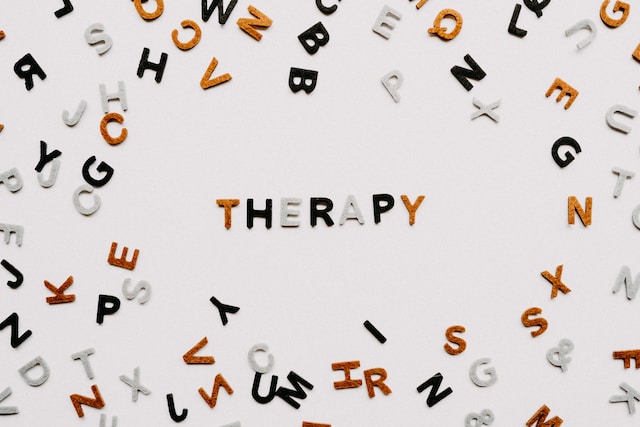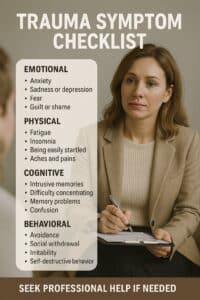What is Sensorimotor Psychotherapy?
Sensorimotor psychotherapy is a type of therapy that focuses on the body’s reaction to thoughts and feelings. This type of therapy is mostly used for the treatment of trauma-related and developmental disorders, but it can also be used to help PTSD, anxiety disorders, substance use/addictive disorders, and more. The goal of sensorimotor psychotherapy is to become more aware of how the body reacts to trauma and how to regain control over these feelings. Through sensorimotor psychotherapy, the client can learn how to effectively respond to their emotions and reactions by paying attention to their own physical sensations.
Benefits of Sensorimotor Psychotherapy
There are many benefits that come from sensorimotor psychotherapy. These include skills in mindfulness, learning how their body and mind interact, and finding healing through learning to tap into the body’s wisdom by identifying ways to help heal on a somatic level. The client can learn how to rewire their body to feel safe and secure, which will help them when they encounter stressful situations. Additionally, sensorimotor psychotherapy emphasizes proactivity, rather than reactivity.
Mindfulness
Clients will learn how to look at their memories mindfully to examine how their traumatic event has affected their life up to this point. They will then go on to learn the skills to keep this memory in the past, not letting it affect their present. Therapy helps them focus on their core organizers of experience related to the traumatic event or memory focused in the present moment. Through the use of mindful directives and exploration, the client is encouraged to notice thoughts, feelings, movements, physical sensations and five sense perceptions in the here and now. This way, they can learn how to create resources to support their recovery process from a physical and emotional standpoint. The therapist will guide them through experiments and exploration of various movements to help them engage in this mindful process.
Increased Awareness
The client will learn how to become more aware of how their mind and body are interacting. They will develop skills that will help them examine how their traumatic memories are affecting their body while staying removed from the memory. This is done through the therapeutic relationship as the clinician and client work collaboratively with the core organizers while learning to drop the narrative. Often therapy focuses on talking about the traumatic event rather than learning tools to change the way in which the autonomic nervous system was wired to continue to respond to the trauma as though it were ongoing. This wiring is what continues to create distress in day to day living and keep the client connected to the event as though it were happening in the moment. Learning to observe, notice, explore, and experiment teaches the nervous system that it can shift out of the survival responses and move back into the window of tolerance.
Physical Functions
One of the main goals and benefits of sensorimotor psychotherapy is learning how emotions and the body interact. The client can develop an understanding of not only how their feelings are affecting them physically, but also how certain movements can trigger specific emotions. By engaging in such movements, the client can begin to release the feelings caused by the traumatic event and help guide them to stop reacting to situations from a survival standpoint.
Three Phases of Sensorimotor Therapy
Sensorimotor psychotherapy consists of three phases: safety and stabilization, working with traumatic memory, and integration. The time spent in each of these phases varies from person to person as there are no time-limitations to sensorimotor psychotherapy.
Phase 1: Safety and Stabilization
The first phase of sensorimotor psychotherapy will help the client gain an idea of how their thoughts and feelings are affecting their physical sensations. With the help of a therapist, the client will begin to examine the core organizers (cognition, emotions, movement, sensations, 5 sense perception) associated with the distressing experience. This is done in a safe space and only with an agreed upon frame so that the client can fully pay attention to the core organizers mindfully as they arise in the present moment experience.
Later in phase 1, the client will begin to uncover the coping mechanisms or resources that are most valuable to them. They will begin to find and understand their strengths, which will in turn help manage the feelings that derive from the trauma they have experienced. Understanding that the body can be a resource for healing is key to sensorimotor psychotherapy
Phase 2: Working with Traumatic Memory
In phase two, the client can begin to recall their traumatic memory and they will collaborate with the therapist to choose a frame and work with the felt sense associated with the memory. They will begin with the series of events leading up to this memory, and will note any physical sensations along the way. For example, does sadness feel different from anger? How does it feel different? Are you feeling these emotions in different places in your body?
Next, the client will discuss the memory in small pieces, paying attention to their body as they did before. Again, this is all based on the client’s comfortability to share. There is no rush to share any of these memories or feelings. The therapist will work with the client to help guide this memory away from the present and into the past. Moreover, therapy can focus on dropping the narrative and working with the core organizers directly in the present moment teaching the client that their body can bring itself back into the window of tolerance from the survival response activation
Phase 3: Integration
In the final phase of sensorimotor psychotherapy, the client will start by engaging in actions that they felt they were unable to in this particular traumatic memory–this is sometimes called reinstating the active defense. For example, they can put their arm up in defense, or say “No”. This is dependent on their own event and will differ for each person. Finding ways to allow their bodies to complete the defensive action can be deeply healing.
In this phase, the therapist will help the client strengthen their confidence. The skills learned in the first two phases will come together to help the client to engage in positive emotions more often while learning how to react to negative ones.
Thank you to Jane Goldsmith and Dr. Laura Riss for this blog post. If you are interested In sensorimotor psychotherapy you can learn more about Dr. Laura Riss and set up an appointment.
















